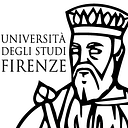Fog-Clearing and the “Irish Dimension” in Oscar Wilde’s Three Society Plays
From Firenze University Press Journal: Studi irlandesi. A Journal of Irish Studies
Richard Haslam, Saint Joseph’s University
Over the past three decades, academic attention to Oscar Wilde’s nationality and its influence on his creativity has steadily grown. This increasing interest includes scholarly debate concerning how best to identify “Irish dimensions” in Wilde’s creative works. In his essays and speeches, letters and lectures, reviews and interviews, Wilde explicitly addressed Irish affairs, but in his poetry, drama and fiction he did not. Consequently, one technique for disclosing allegedly hidden “Irish dimension[s]” in Wilde’s creative pieces became popular: treating the works as if they were intentionally constructed allegories, whose supposedly encoded content the ingenious critic decoded. The most frequent candidates for this millennia-old methodology (formerly called (formerly called hyponoiahyponoia, more recently termed ‘allegoresis’) have been !e Picture of Dorian Gray (1891), The Happy Prince(1888), A House of Pomegranates (1891) and The Importance of Being Earnest (1895)4. In the latter, Gwendolen begs Jack to stop mentioning “the weather” because “[w]henever people” bring it up, she is sure “they mean something else,” which causes her to feel “so nervous”; Jack replies, “I do mean something else” (Wilde 2019, 776). For critics in search of an “Irish dimension” in!e Importance of Being Earnest, The Picture of Dorian Gray, and the short stories, the “something else” usually means concealed political commentary. Nonetheless, recent Hibernicizing-via-allegorizing critics have paid surprisingly little attention to Wilde’s society plays, Lady Windermere’s Fan (1892), A Woman of No Importance (1893) and An Ideal Husband(1895), perhaps because their comparative realism (in plot, setting, and characterization, if not dialogue) affords greater resistance to allegoresis than the fairy tale and Gothic milieux of much of his fiction. Responding to the imbalance in critical attention, this essay seeks to answer several questions. Do the society plays possess a distinctive and substantive “Irish dimension”? If so, where can it be found, and how extensive is it? A useful starting-point for addressing these issues is W.B. Yeats’s review in United Irelandof Wilde’s Lord Arthur Savile’s Crime and Other Stories (1891). Yeats cites Wilde’s claim (from the revised, expanded !e Picture of Dorian Gray) that “[b]eer, [the B]ible, and the seven deadly virtues have made [our] England what she is” (Yeats 1970, 110–111, citing with errors Wilde citing with errors Wilde 2005, 335). 2005, 335). In words that anticipate fellow countryman George Bernard Shaw’s 1895 review of An Ideal Husband, Yeats claims that “part of the Nemesis that has fallen upon” England “is a complete inability to understand anything” Wilde states, but “[w]e [in Ireland] should not find him so unintelligible — for much about him is Irish of the Irish” (1970, 111). As Shaw does later, Yeats sees in Wilde’s “life and works an extravagant Celtic crusade against Anglo-Saxon stupidity”, in which he “peppers John Bull with his peashooter of wit” (ibidem). Commenting on the title story of Wilde’s volume, Yeats finds in it “something of the same spirit that called Ireland once with gallant, irresponsible ill-doing, but now it is in its right place making merry among the things of the mind, and laughing gaily at our most firm fixed convictions” –and Yeats locates this same “spirit” in Shaw (110–111). Yeats’s recognition of affinities between Wilde and Shaw is prophetic: two years later, when sending Shaw a published copy of Lady Windermere’s Fan, Wilde inscribed the volume “ ‘Op. 1 of the Hibernian School, London ’93’”, and Hesketh Pearson subsequently identified the succeeding works of what Wilde elsewhere called “the great Celtic School” as Shaw’s Widowers’ Houses (1892), A Woman of No Importance, Shaw’s The Philanderer (1893) and An Ideal Husband (2000, 563)7. Given these plays’ thematic and stylistic differences, what might unify them su%ciently for Wilde to believe they formed a national “School”? Wilde’s letter to Shaw three months earlier provides a possible answer: “we are both Celtic, and I like to think that we are friends” (554)8. After praising Shaw’s !e Quintessence of Ibsenism (1891) (“such a delight to me that I constantly take it up, and always “nd it stimulating and refreshing”) and saluting Shaw’s critique of “the ridiculous institution of a stage-censorship” (from which Wilde had suffered the previous year, with the banning of performances of Salomé), he declared, “England is the land of intellectual fogs but you have done much to clear the air” (ibidem). For Wilde, then, key goals of the “Celtic” or “Hibernian” (but, interestingly, not Irish) “School” included celebrating Ibsen, deprecating “stage-censorship”, and extirpating the English “intellectual fogs” of Philistinism and Puritanism10.Building on Wilde’s implicit mission statement, this essay argues that the “Irish dimension” in his society plays turns out to be relatively modest in scale and consists not of the allegorically encoded political commentaries previous critics claimed to discover in Wilde’s “ction and The Importance of BeingEarnest but instead strategies of plot, characterization, and dialogue designed to alert England to the urgent need “to clear” away its “intellectual fogs”
DOI: https://doi.org/10.36253/SIJIS-2239-3978-14623
Read Full Text: https://oajournals.fupress.net/index.php/bsfm-sijis/article/view/14623
